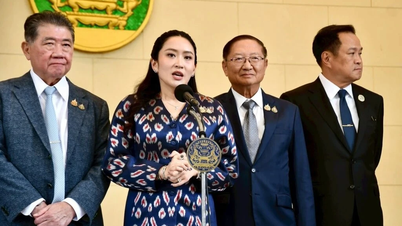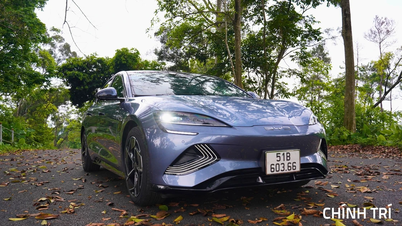From June 1, 2025, about 37,000 households with annual revenue of over 1 billion VND in a number of industries (food and beverage, hotels, retail, passenger transport, beauty, entertainment...) in Vietnam must use electronic invoices (E-invoices) via cash registers connected to tax authorities. This is an important step to modernize tax management, increase transparency and efficiency in economic activities.
In the context of globalization and strong digital transformation, electronic invoices have become an essential financial and tax management tool in many countries.
Mexico
Mexico is one of the pioneering and most successful countries in the world in implementing e-invoices. With the goal of modernizing the tax administration system, reducing budget losses and increasing transparency in business operations, the Mexican government began applying e-invoices in 2004. Initially, the application was encouraged, but by 2011 it became mandatory for most domestic enterprises.
Electronic invoices in Mexico are standardized in the CFDI (Comprobante Fiscal Digital por Internet) format, a digital document with an authentication code issued by the tax authority. The system operates on a tripartite model, in which the seller sends the invoice to the National Tax Agency SAT for authentication, before sending it to the buyer. This allows the authorities to monitor in almost real time all transactions occurring in the economy, especially those with a high risk of fraud.

One notable aspect of Mexico’s experience is that the government has partnered with intermediary service providers, called PACs (Proveedores Autorizados de Certificación), to process and authenticate invoices on behalf of the tax authority. This has reduced the pressure on the SAT system and made it easier for businesses to integrate their accounting systems with the national invoice authentication platform.
The implementation of e-invoices has yielded impressive results for Mexico. In just the first three years after mandatory implementation, VAT revenues increased by more than 34%, demonstrating better control over tax evasion and invoice fraud. The system also significantly reduces the costs of printing, storing and checking traditional invoices, while improving the efficiency of financial management within businesses.
Lessons from Mexico show that to successfully implement e-invoices, careful preparation of technological infrastructure, a strong legal framework and the support of the private sector are needed. In addition, a clear implementation roadmap, with technical support for small and medium-sized enterprises, will help increase compliance and the sustainability of the system in the long term. Mexico is a typical example showing that e-invoices are not only a technical tool, but also the foundation for a transparent and modern public finance system.
Italy
Italy is one of the pioneering countries in Europe in implementing e-invoices on a large scale. With the goal of modernizing the tax system, reducing budget losses and enhancing financial transparency, the Italian government has gradually applied e-invoices since 2014. Initially, e-invoices were applied in transactions between businesses and the public sector (B2G). By 2019, the country officially expanded the mandatory use of e-invoices to all transactions between businesses to businesses (B2B) and businesses to consumers (B2C).
At the heart of the Italian e-invoice system is the SDI (Sistema di Interscambio) intermediary platform, operated by the national tax authority. All e-invoices must be sent to SDI for validation before being sent to the recipient. Using SDI not only helps the tax authority collect data in real time, but also reduces errors in tax declarations by businesses. The system acts as a unified tax data portal, connecting information from multiple sources, including payment data and banking information.

One of the clear advantages of the Italian model is the ability to synchronize electronic invoice data with the automatic tax declaration system. Thanks to the timely and complete collection of data, tax authorities can support businesses in preparing value-added tax declarations, significantly reducing the administrative workload and limiting errors due to mistakes or omissions in declarations.
However, the initial implementation of e-invoices in Italy also encountered many difficulties, especially for small and micro enterprises. Concerns about technology investment costs, lack of specialized human resources and changes in business processes caused some negative reactions from the business community. To address this issue, the Italian government has implemented many support measures such as free basic e-invoice software, financial support for small and medium enterprises, as well as organizing extensive communication and training campaigns nationwide.
Italy’s success in implementing e-invoices demonstrates the important role of consistent policies and timely support from the state. Experience from Italy proves that e-invoices are not only a tax management tool, but also an important stepping stone in the process of comprehensive digitalization of the economy.
Singapore
Singapore is one of the leading countries in Asia in applying digital technology to public administration, including the field of e-Government. Instead of applying mandatory measures like many other countries, Singapore chooses a flexible and agile approach, focusing on creating favorable conditions for businesses to voluntarily transform. This strategy reflects Singapore's unique governance philosophy: the Government creates, accompanies and leads businesses through a modern technology platform.
The focus of Singapore's e-invoicing system is its integration with the PEPPOL (Pan-European Public Procurement Online) network, an international e-invoicing standard developed in Europe but adopted by many countries around the world. The Singapore government officially became a member of the PEPPOL network in 2019 and is the first country in Asia to deploy this system on a national scale.

Through the PEPPOL network, businesses can send and receive e-invoices easily, securely and in a standardized manner for both domestic and international transactions. Using PEPPOL not only promotes cross-border e-commerce but also helps Singapore businesses integrate more smoothly into the global supply chain.
To encourage businesses, especially small and medium-sized enterprises, to adopt e-invoices early, the Singapore government has implemented a series of specific support policies. Funding programs have been implemented to help businesses equip themselves with PEPPOL-certified software, and provide free or subsidized initial implementation service packages. The government has also built an electronic information portal with detailed instructions on how to apply and the benefits of e-invoices, and organized training sessions and seminars to raise awareness and skills for the business community.
Thanks to a flexible approach, modern technology platform and effective support policies, the rate of businesses in Singapore using e-invoices is increasing, even though there is no legal requirement.
Singapore’s model shows that the transition to e-invoicing does not necessarily have to be accompanied by sanctions, but can be achieved successfully through consensus, support and the right direction from the government. This is an important lesson for many countries looking for the right way to promote digital transformation in the finance and accounting sector.
Source: https://khoahocdoisong.vn/cac-nuoc-trien-khai-hoa-don-dien-tu-hieu-qua-the-nao-post1548990.html



































































































Comment (0)